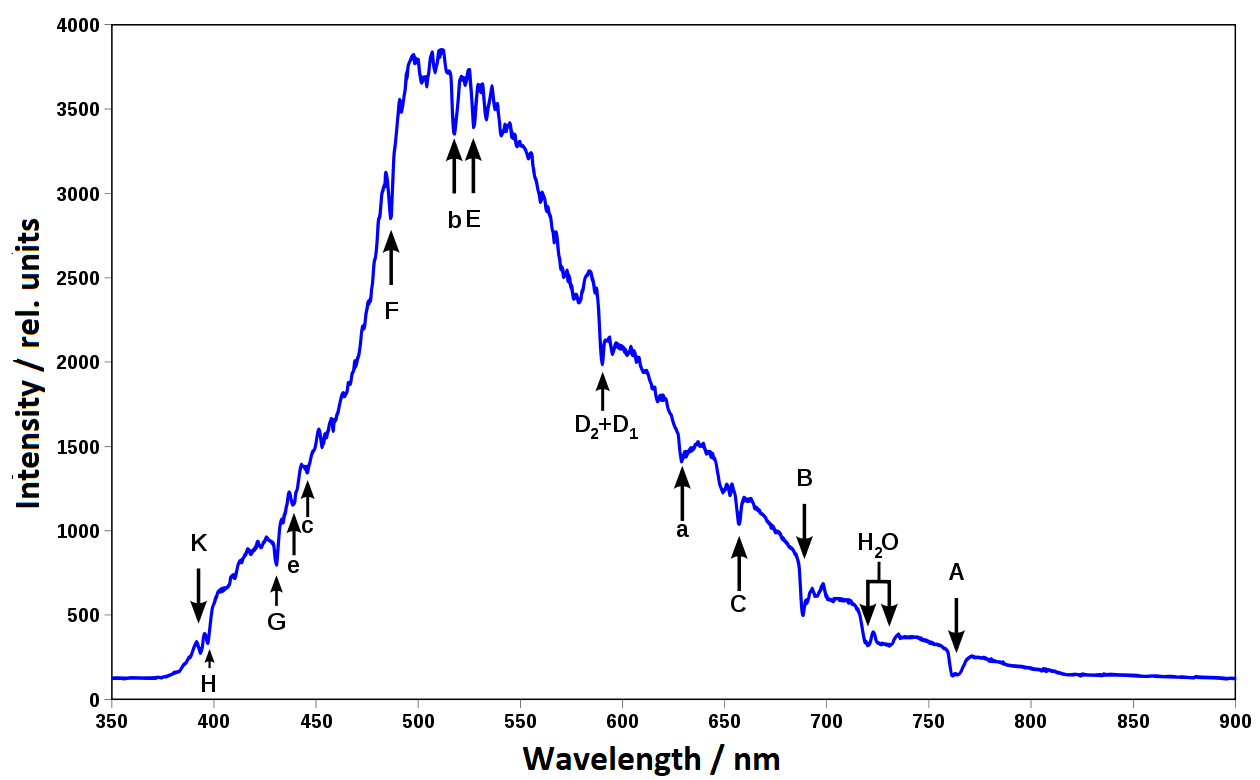3. Climate and climate change
Solar radiation (2/4)
You may have noticed that in the figure of solar radiation, at the outer edge of the earth's atmosphere (extraterrestrial), the curve of the graph is very rough, while the curve of the graph of the black body radiation appears perfectly smooth. Looking further in detail of the spectrum of solar radiation, we can see clear differences between the two.
The Fraunhofer lines
Solar radiation from the photosphere of the sun, containing matter of about 5900 K, must traverse the outer, colder layers of the solar atmosphere, the so-called chromosphere, before reaching space. The atoms and ions already present there absorb radiation at wavelengths characteristic to the respective elements they comprise of. As a result, the corresponding wavelengths in the spectrum that reaches space will be weakened. The atoms and ions which have absorbed the radiation will also release that same radiation by falling to a lower energy level, but because the atoms and ions scatter radiation in all directions, it results in a net loss of radiation in the direction of the Earth.
The resulting absorption lines in the spectrum are the Fraunhofer lines, named after their discoverer Joseph von Fraunhofer.

The most important Fraunhofer lines in the visible spectrum, with their names chosen by Fraunhofer.
Source: Wikipedia
The following illustration shows a spectrum of a blue sky on a sunny day with the deviations in brightness caused by Fraunhofer lines.

Brightness spectrum of a blue sky. The Fraunhofer lines are also marked. The indentations marked with H2O come from water vapour in the Earth's atmosphere, and are therefore not Fraunhofer lines.
Source: Eric Bajart, Wikimedia Commons, modified.
In the two images, the lines discovered by Fraunhofer are marked with the historical labels he chose.
